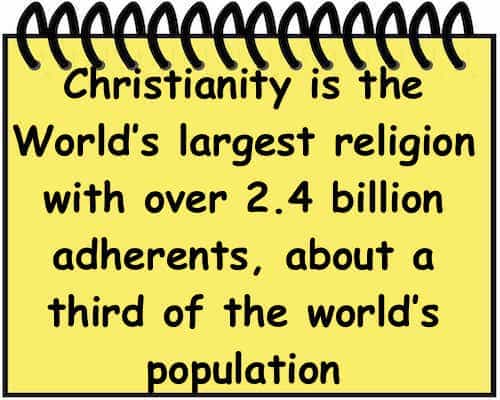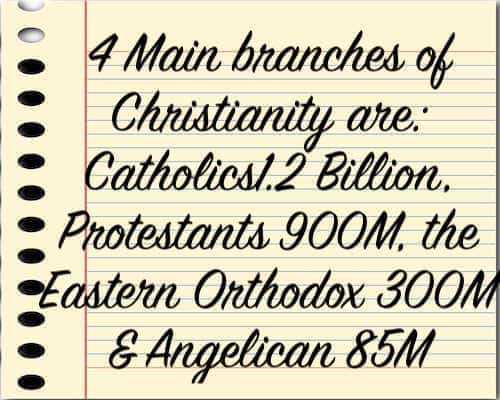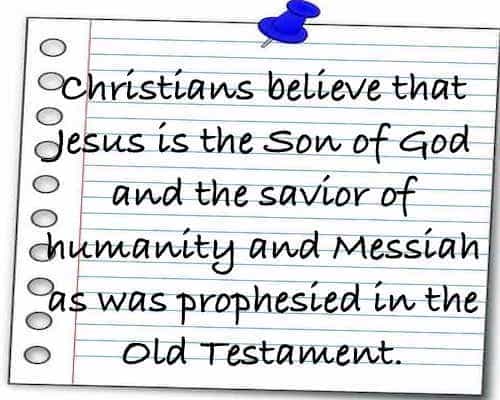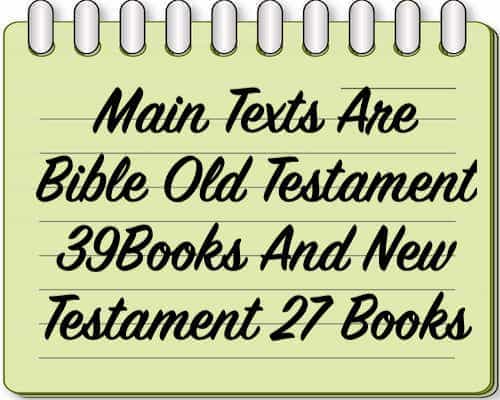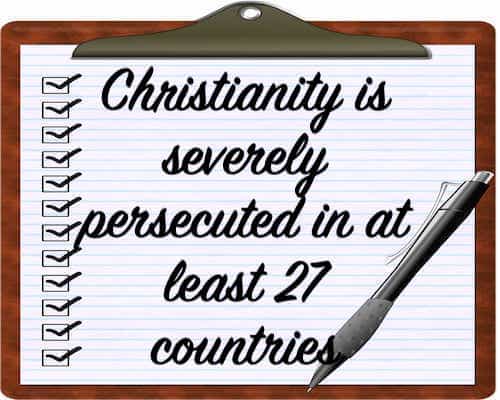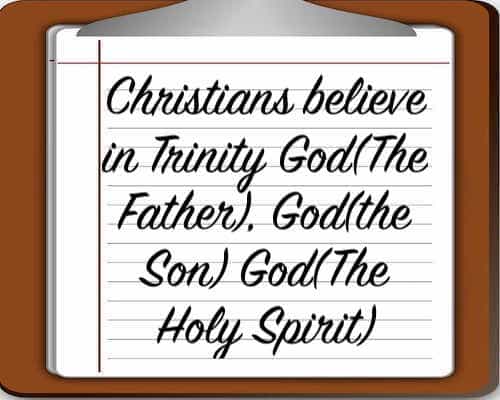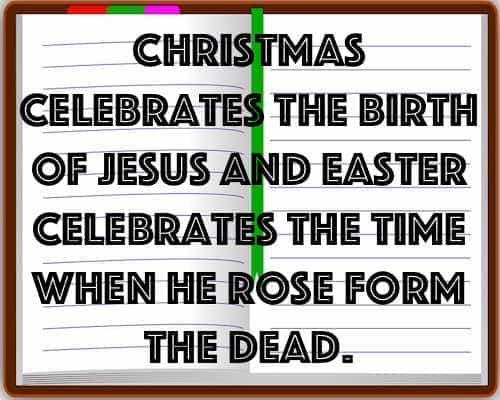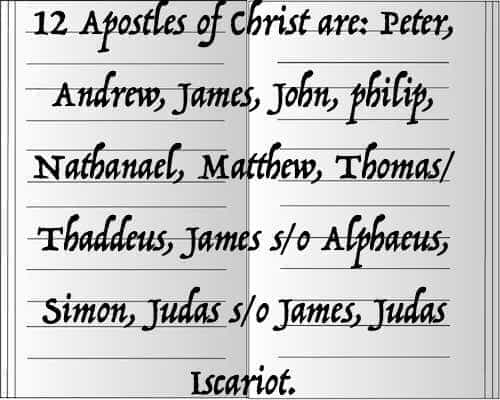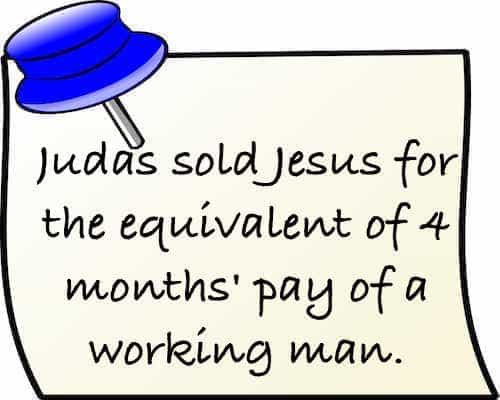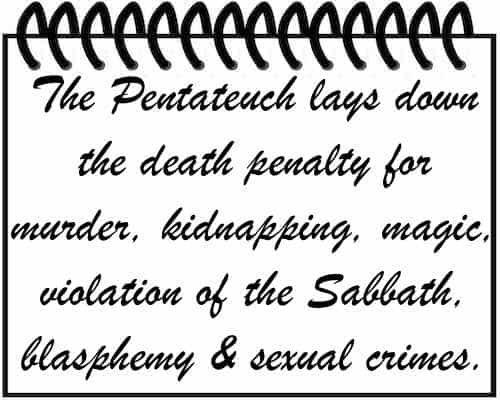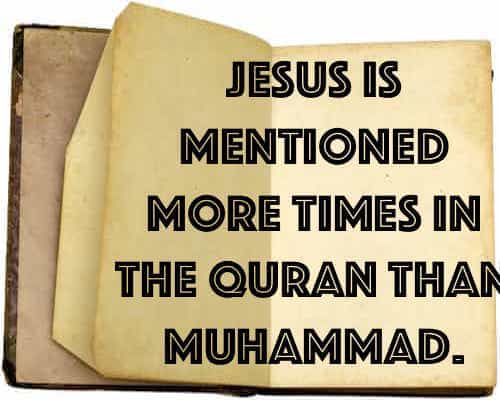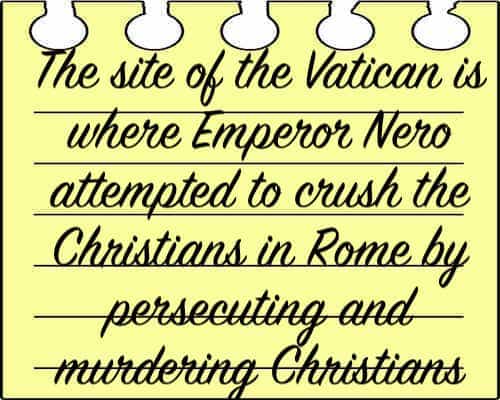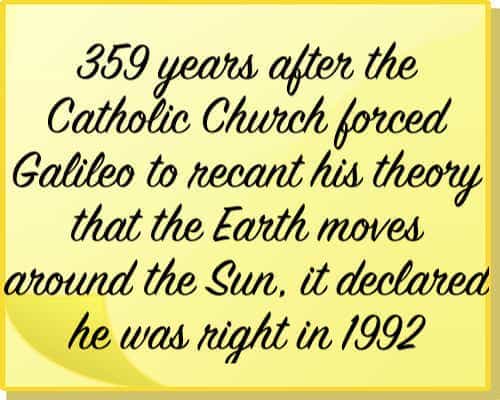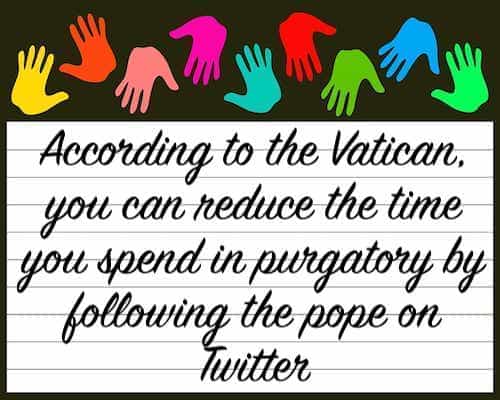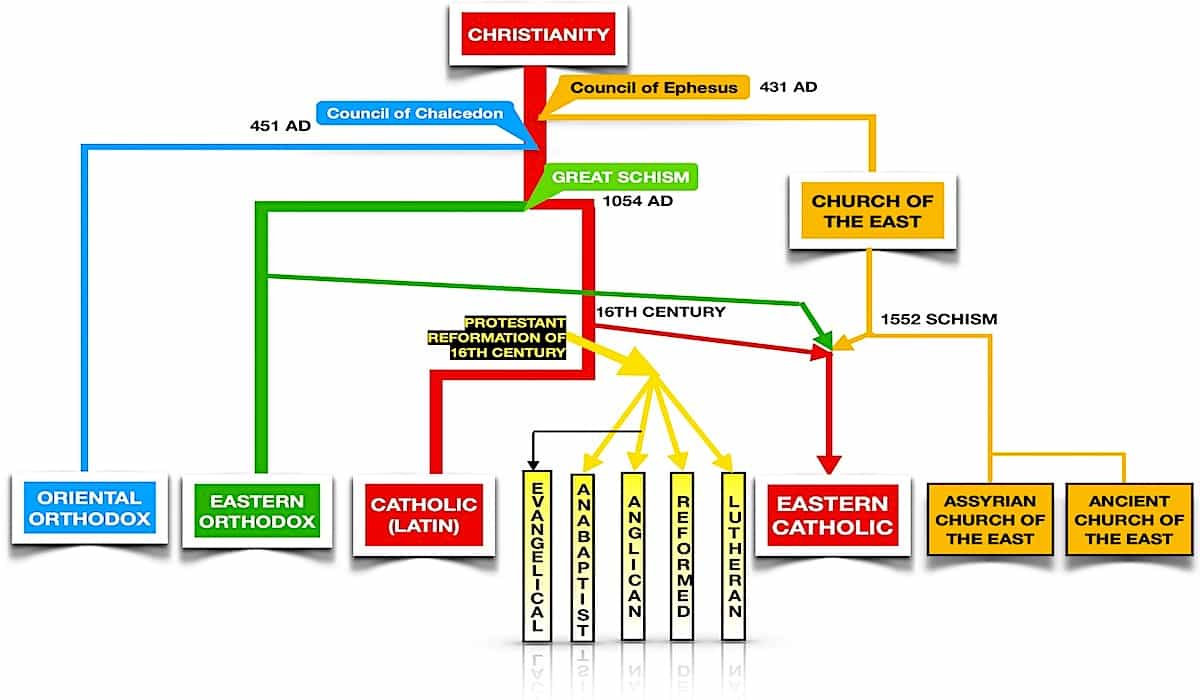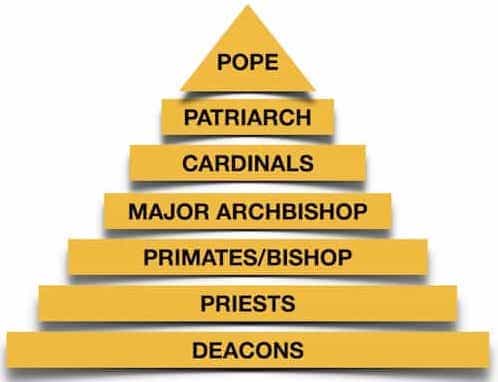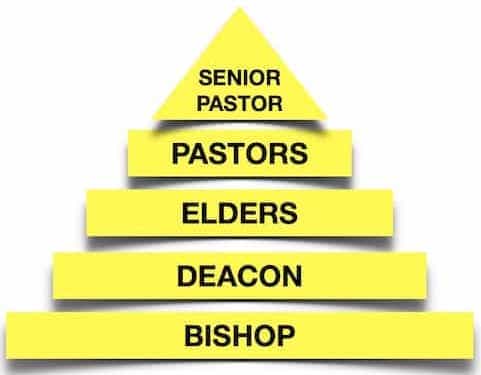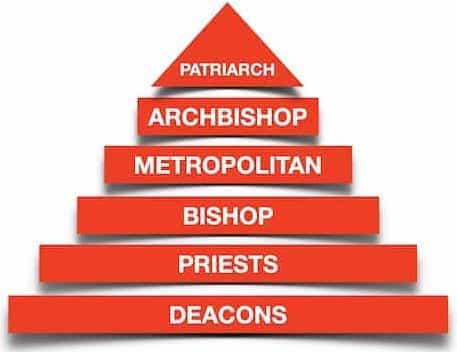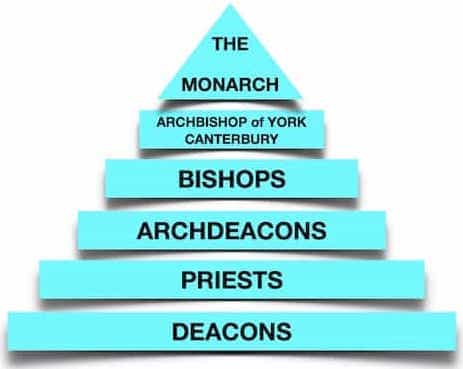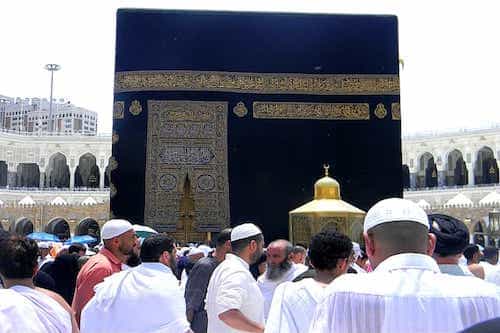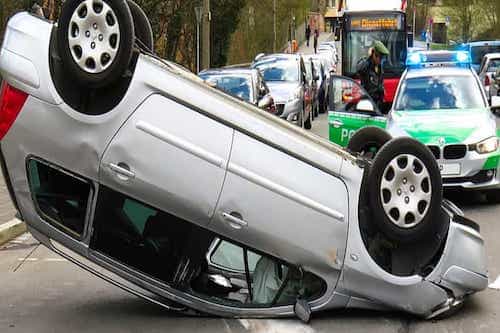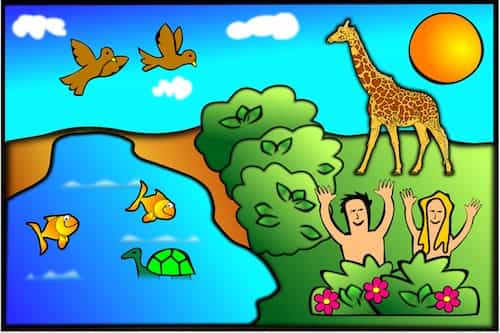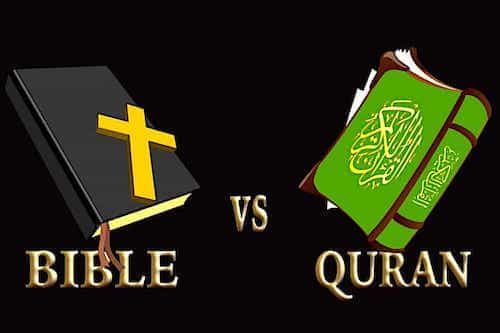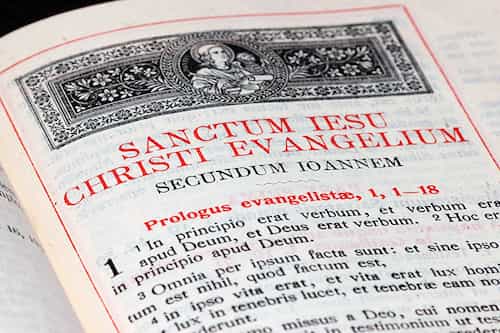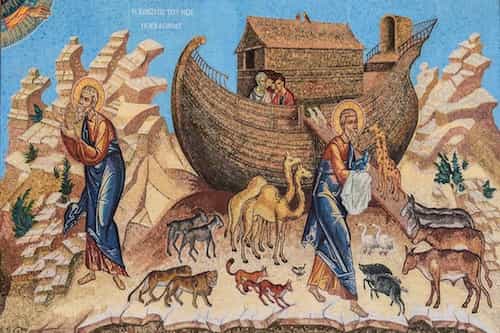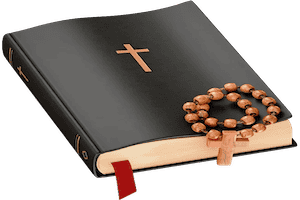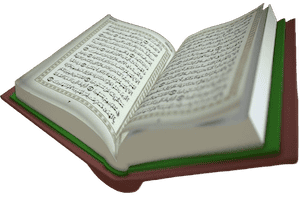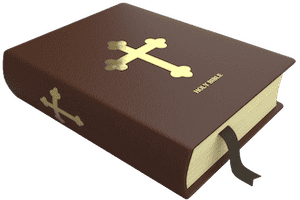FAST FACTS SLIDE SHOW
CLICK THE IMAGE TO OPEN IN LIGHT BOX
INTRODUCTION & BASIC TERMS
Place of Origin:
Israel
Founder:
Jesus of Nazareth
Date Founded:
33 AD
Sacred Text:
The Bible (Old and New Testaments)
Sacred Places:
Jerusalem (Church of the Holy Sepulcher, Mount Zion, Gethsemane), Bethlehem, Nazareth, Cana, Machaerus, Al-Maghtas, Mount Tabor and Sephoria.
Major Branches:
Catholic, Oriental Orthodox, Eastern Orthodox, Protestants
Major Sacred Rituals :
Baptism, Communion (Eucharist)
Basic Doctrine:
Creed (Apostle’s or Nicene-Trinity). Humans are sinners, Because God loves us, He Sacrificed his Son for us; believe in Jesus and you are saved.
Trinity:
Godhead as One God in 3 Persons: God(The Father), God(the Son) God(The Holy Spirit)
—
Son Of God:
Term used to label that Jesus is divine and the spiritual son of God
Crucifixion:
Killing of Jesus on The Cross. The Way By which Jesus Atoned for the sins of All Humans.
Resurrection:
The resurrection of Jesus is the Christian belief that God raised Jesus after his crucifixion
Ascension:
The Departure of Christ from Earth into the presence of God in Heaven.
Atonement:
The Sacrifice of Jesus on the Cross whereby His Blood becomes the Sacrifice that turns away the Wrath of God from the Sinners.
Salvation:
Jesus Death on the Cross is a sacrifice that redeems man and reconciles man to God. A Gift of God to the person who trusts in Christ and His sacrifice on the cross.
Afterlife:
New Life in Resurrected Bodies. Eternal life in heaven. Catholics also believe in an intermediate state, “Purgatory”
BELIEF
Christianity is a monotheistic religion based on the life, death, and teachings of Jesus of Nazareth who lived about 2000 years ago in Palestine, then part of the Roman Empire. With 2.4 billion adherents or about one-third of the total world population, Christianity is the largest world religion. Much of Christianity’s speedy growth in the early years was due to a Greek speaking Jew and a Roman citizen named Saul of Tarsus. Later known as St. Paul (died around 65 AD). He preached and established churches in many parts of Europe and Asia. Because Christians refused to worship the Roman Emperor as divine, Romans severely persecuted Christians until the 4th century. At that time, Emperor Constantine made Christianity the official religion of the Roman State and thus started the era of Christians domination.
Christians believe that Jesus was born in Bethlehem to Mary, a virgin, and Joseph, her husband. Christians believe that Jesus was fully human, and felt this world in the same way as other human beings of his time. Jesus was persecuted, tortured, and gave his life on the Cross. Jesus rose from the dead on the third day after his Crucifixion. Christians believe that Jesus Christ is the Son of God and the “Promised Messiah” who saves the world. Christians believe that there is only one God, but that this one God consists of 3 “persons.” God (the Father), God (the Son) and God(The Holy Spirit).
TOUCH THE BOXES TO QUICKLY TEST YOUR KNOWLEDGE
CHRISTIANITY
Major FestivalsChristmas, Lent, Easter, Pentecost, Saints' Days
CHRISTIANITY
PopulationTotal 2.4 billion: Catholic 1.2B, Orthodox 300M, Protestant 900M, Anglican 85M
CHRISTIANITY
Major BranchesCatholic, Oriental Orthodox, Eastern Orthodox, Protestant
CHRISTIANITY
SymbolsCross, Dove, Lamb, fish, alpha/omega
CRUCIFIXION
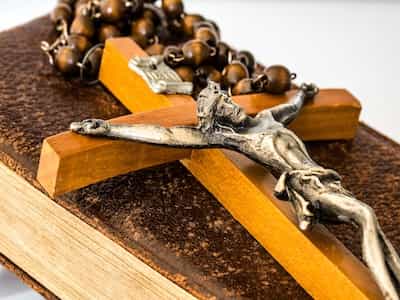
RESURRECTION OF CHRIST
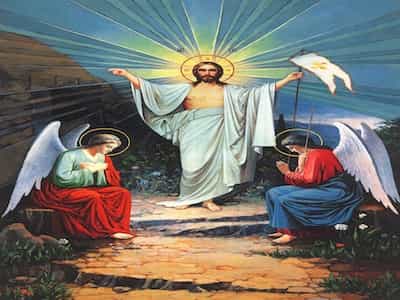
ASCENSION OF CHRIST
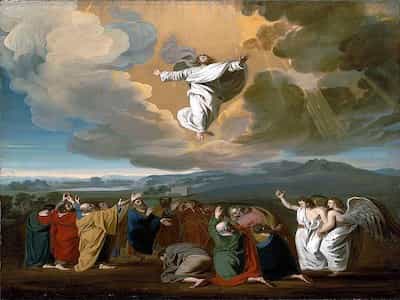
RESURRECTION & AFTERLIFE
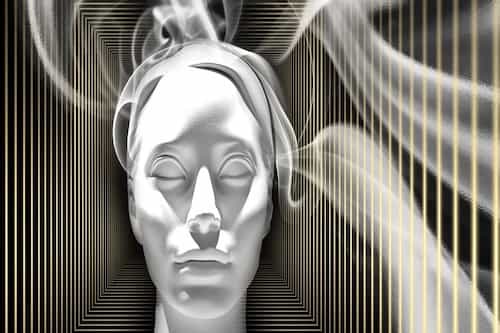
CHRISTIAN DENOMINATIONS
Divisions And Branches In Christianity
Christianity has divided into four major branches Catholics, Eastern Orthodox, Oriental Orthodoxy, and Protestantism. Roman or Latin Catholicism represents the continuation of the historical organized church as it evolved over the centuries, and is headed by the Pope. However, if you see the diagram below, there are other divisions also. The first split was in the 5th century after the Council of Ephesus in 431 AD. The Council agreed Nestorianism (which emphasized the disunity of the human and divine natures of Christ) was wrong. The Roman Catholic Church decreed Jesus to be “two natures in one person. The Assyrian Church of the East did not agree and split from the rest. Later after 20 years at the Council of Chalcedon, again there was a disagreement and the decision of the Council was to excommunicate all those not agreeing, and all such became the Non-Chalcedonian Orthodox, or in general, all these churches are known as Oriental Orthodox Churches. The Oriental Orthodox aka Old Oriental churches acknowledges and recognize the first three ecumenical councils: Nicaea, Constantinople, and Ephesus, but reject the dogmatic definitions of the Council of Chalcedon.
The third split happened in the 11th century. It is called the Great Schism. It was mostly based on personal disagreements between the Bishops of Rome and Constantinople resulting in Roman Catholicism and Eastern Orthodoxy respectively . It started when the Patriarch of Constantinople and the Pope excommunicated each other. Eastern Orthodoxy includes the Greek, Russian Orthodox Churches, and several others. They differ from Catholicism in its refusal of allegiance to the Pope, its emphasis on the use of icons in worship, and the date it celebrates Easter. Other cultural, political, and religious differences exist as well.
The fourth major division happened when during the industrial revolution and invention of the printing press, it became easier for the people to interact with each other more efficiently and to read and study the Bible. This led many thinkers over the years to come up with new ideas and to break away from the Catholic Church, and thus Protestantism arose in the 16th century. The most prominent leaders of this movement were Jan Hus, Martin Luther, and John Calvin. Protestants do not recognize the authority of the Pope, do not have the same affection for Mary, the mother of Jesus, that the Catholic and Orthodox churches have, reject many traditions and beliefs of the Catholic Church, and emphasize the importance of reading the Bible and the doctrine of salvation by faith alone. Protestantism further split into many denominational groups, including Baptists, Methodists, Episcopalians, Presbyterians, Pentecostals, and Evangelicals. In England, a similar protest against the Pope, first political and later religious, led to the Church of England and formation of Anglican Christianity.
Distinctive Catholic practices include devotion to Mary and the saints, recognition of seven sacraments and veneration of relics and sacred sites associated with holy figures. Eastern Orthodoxy holds many practices similar to Catholicism but is mainly distinguished by the primary role of icons. The Nicene Creed, however, is typically accepted as authoritative by most Christians, including the Catholic, Oriental Orthodox, Eastern Orthodox and major Protestant, including Anglican, denominations.
CHRISTIANITY CHURCH RANKS
Religious Hierarchy: Church Clergy Titles, Church & Leadership Hierarchy
Below is a general description of Christian Religious hierarchy esp of the Catholic Church. Other denominations of Christianity have some differences in ranking and titles as shown by three pictures below for Protestants, Orthodox, and Anglican Churches.
Pope:
is the head of the Church, leader of the entire Catholic Church worldwide, a successor of the Saint Peter (it is believed that the Pope is a successor to Saint Peter and Saint Peter was appointed by Jesus as the leader of the Church), the Bishop of the Rome and head of the Vatican city. The Pope is impeccable in defining matters of faith and morals. The present Pope is Francis Jorge Mario Bergoglio born 17 December 1936. He is the first Pope from the Americas, the first from the Southern Hemisphere, the first to visit the Arabian Peninsula, and the first Pope from outside Europe after the 8th century. There are approx around 3000 Bishops working under the Pope and overall 219,583 priests.
The Patriarch:
A patriarch is known as the highest ranking bishop of the Roman Catholic church, above the Major Archbishop and Primate. The patriarchs have power and authority over the bishops and metropolitans of their particular Church. The patriarchs are the head of some autonomous churches like the Syrian Catholic Church, Coptic Catholic Church, Chaldean Catholic Church, Melkite Greek Catholic Church, the Maronite Church, and Armenian Catholic Church.
Cardinal:
Cardinals can be positioned second in the Christianity religious ranking, after the Pope. There are 178 cardinals appointed by the Pope which make up the College of Cardinals. This College is responsible for electing a new pope, whenever the seat becomes vacant. They are also called as the Prince of the Catholic Church.
Archbishop:
An archbishop is a bishop of a main or metropolitan diocese, also called an archdiocese. A Cardinal can side by side hold the title. They also act as head for some different Churches holding some local Churches under them. The authority of a major archbishop in his Church is almost equivalent to that of a patriarch in his Church.
The Primates/Bishop:
is a rank or a special title provided to some Bishops in certain Catholic Churches. He is a teacher of church law, a priest of holy worship, and a minister of church government. The Primates serve the first diocese developed in the country.
Priest:
An ordained minister who can administer most of the sacraments, including Baptism, The Eucharist and marriage. He can be with a particular religious order or committed to serving a congregation.
Deacon:
The function of the diocesan bishops is to govern the local regions within the Church, known as the dioceses. It is viewed as part of the clerical state or as a layperson. The bishops are collectively known as the College of Bishops. As a member of the College of Bishops, shares in the responsibility for the governance of the whole Church.
A GENERAL IDEA OF CHURCH TITLES & RANKING IN OTHER DENOMINATIONS
CHRISTIAN IMPORTANT DAYS & FESTIVALS
Christian Celebrations, Festivals and Holy Days
The Christian year is divided into events that recall the life of Jesus. It starts with the Advent then moves through the story of Jesus life till his Resurrection on Easter Sunday. After this, it focuses on the founding of the Church itself, with the coming of the Holy Spirit at Pentecost and a period of instruction and solidification of the faith during the weeks of Trinity.
Some Christian festivals happen on the same date every year, while others move around within a range of dates. This is because the Christian Calendar developed out of two other Calendars fixed’ feats based on the Roman solar calendar, and moveable ones based on the Jewish lunar calendar.

ADVENT:
Advent means coming. It is the four week season of preparation for the birth of Christ, and for the Second Coming. Advent Sunday is the first of the four Sundays before the 25th December and is the start of the Christian year begins on the Sunday nearest to 30th November and lasts until midnight on Christmas Eve.
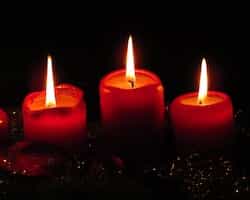
CHRISTMAS EVE:
Christmas, started at sunset on 24 December and thus considered as Christmas Eve/Christmas Evening. Christmas then continue until nightfall on the 25th which started Boxing Day St. Stephen’s Day, the first of the twelve days of Christmas.

CHRISTMAS:
The season of Christmas begins on the 25 December and traditionally lasts twelve days ending on 5 January. Eastern Orthodox Christians celebrate the birth on the 7th January. The word Christmas (Christ’s Mass) comes from the Old English name ‘Cristes Maesse’ as is known to celebrate the Mass or church service, for Christ. Celebrated on the 25th December, with a Christmas dinner at midday for the whole family.
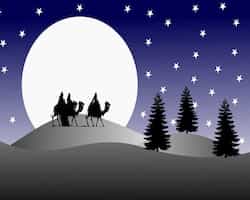
EPIPHANY:
Epiphany is Greek word meaning ‘to show’ and also indicates the end of the 12 days of Christmas in Western churches. It is celebrated on the 6 January and commemorates the showing of Jesus to the Gentiles, represented by the visit of the Magi/wise men to Jesus as recorded in the gospel of Matthew 2:1-12.

SHROVE TUESDAY:
ALSO Known as Pancake Day and Fat Tuesday. Shrove Tuesday is marked the day before Ash Wednesday and is the final day before the start of Lent. The name Shrove comes from the old word “shrive” which means to confess. Pancake Day because it is the one day of the year when almost everyone eats a pancake. It falls 47 days before Easter Sunday, so the date varies from year to year and falls between 3 February and 9 March.
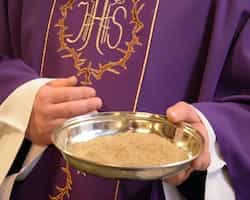
ASH WEDNESDAY:
Lent begins with Ash Wednesday. It is always 61/2 weeks before Easter from 4 February to 10 March. Ashes are a sign and symbol for Christians of being sorry for things they have done wrong and want to get rid of forever. The marking on the forehead with Ash marks the commitment to Jesus Christ and God.
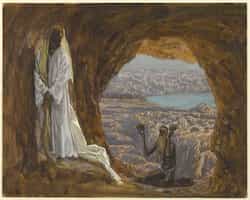
LENT:
Lent is the 40 days before Easter commencing with Ash Wednesday leading up to Easter remembering the 40 days Jesus spent in the desert fasting and praying at the commencement of his ministry. The 40 days before Easter do not include Sundays although the Eastern churches include Sundays. Sundays are always a day of celebration in the Christian Church and so not to be included in the 40 days of Fast.

MOTHERING SUNDAY:
It is actually the 4th Sunday of Lent. It is an occasion for family reunions for those working away from their towns, as back in the past, once a year, people returned to their home or mother church. It is also known as Refreshment Sunday because the fasting rules for Lent were relaxed that day. The day has now popularly known as Mother’s Day.
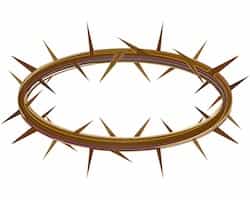
HOLY WEEK:
Holy Week in the last week of Lent and remembers as the last week of Jesus life which celebrates his entry into Jerusalem the week before he was crucified. It starts on Palm Sunday and ends on Easter Monday.
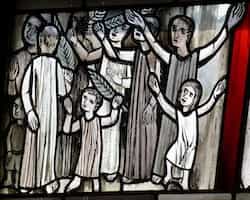
PALM SUNDAY:
It is the day Jesus arrived in Jerusalem. Palm Sunday is the 6th and last Sunday of Lent and the beginning of Holy Week. It is a time of celebration as well as sadness because Jesus died on a cross less than a week after he had entered Jerusalem. It is called Palm Sunday because the crowds welcomed Jesus and waved palm branches as they followed Jesus into Jerusalem
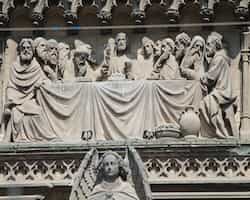
MAUNDY THURSDAY:
ALSO known as Holy Thursday. The name Maundy is derived from the Latin word “mandatum”, meaning a commandment. It is the day before Good Friday and remembers the Last Supper of Jesus Christ with the Apostles and the betrayal by Judas. During the meal, Jesus took bread and wine and shared with his disciples celebrated as a rite of Eucharist in memory of Jesus while referring to the bread as “Jesus body” and the cup of wine as “the new covenant in his blood. Maundy Tuesday is the beginning of the three-day celebration of Easter. This period called The Triduum is one big celebration, commemorating the last supper, crucifixion and the Resurrection to new life. This day Christians also do the ceremony of washing the feet of the poor commemorating Jesus washing of His disciples’ feet on Maundy Thursday.
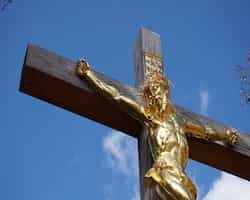
GOOD FRIDAY:
It celebrates the death of Jesus by crucifixion and is called Good because of Jesus sacrificial love by giving his life for the healing of the world. The name may be derived from God’s Friday in the same way as goodbye is derived from God be with ye(you).
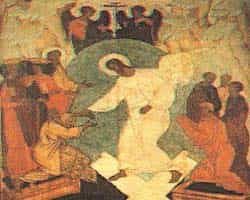
HOLY SATURDAY:
Holy Saturday is also known as Easter Even and the Great Sabbath. It is the Saturday before Easter, the last day of Lent and is the day when Christ’s body lay in His Tomb.
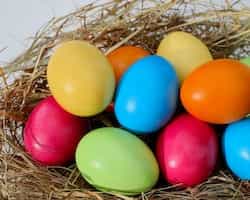
EASTER SUNDAY:
The Most important day in Christian Calendar commemorates when Jesus resurrection from the dead. Eggs are a significant symbol of Easter since they symbolize new life.
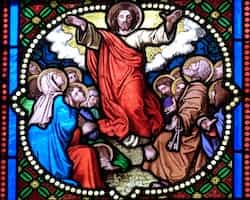
ASCENSION DAY:
Remembers the day when Jesus ascended into Heaven 40 days after his Resurrection from the dead, and mark the end of the earthly appearances of the risen Christ before the disciples received Christ’s Spirit at Pentecost.
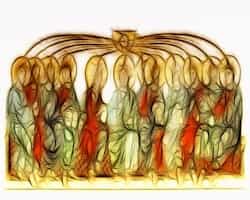
PENTECOST:
ALSO known as Whit Sunday. It is celebrated on the Sunday 50 days after Easter and is also known as Whitsun or White Sunday because it used to be one of the main Sundays when baptisms took place and those baptized would be dressed in white. It celebrates the anniversary of the coming of the Holy Spirit to Jesus disciples at the time of the Jewish festival Shavuot. Luke wrote in the Book of Acts that the disciples encountered the Holy Spirit like fire and a strong wind, and afterward felt bold enough to tell others about Jesus life, death, and Resurrection. It is thus, seen as the birthday of the Christian Church.
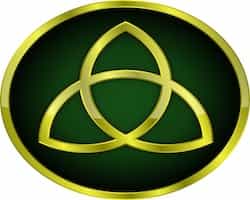
TRINITY SUNDAY:
Rather than commemorating historical events of special significance as with other festivals, Trinity Sunday is a day when Christians think of the nature of God.
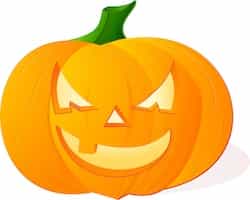
HALLOWEEN:
All Hallows Eve or All Saints Eve is a celebration observed on 31 October, at the eve of the Western Christian feast of All Hallows and is dedicated to remembering the dead, including saints and martyrs. Activities include trick and treating, attending Halloween costume parties, lighting bonfires, carving pumpkins into jack-o’-lanterns, apple bobbing, playing pranks, visiting haunted attractions, telling scary stories, as well as watching horror films.
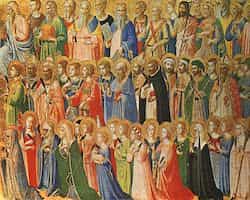
ALL SAINT’S’ DAY:
ALSO known as All Hallows Day. The early followers of Jesus were called saints or holy ones’. It is in celebration of people who have lived particularly sacred lives and are recognized as official saints. It is also known as All Hallows Day (Hallows meaning a saint)
WORLD’S RELIGIOUS POPULATION
Religious Populations By Number Of Adherents
You can see that Christianity has the largest number of adherents worldwide around 2.4 billion in numbers 31.7%. Muslims are second in numbers around 23.7% 1.8 billion. But there is a declining pattern in Cristian population and statistics shows that by 2050 there will be near parity between Muslims and Christians and after that Muslim will become the largest religious populations by number of adherents.
PLEASE DRAG THE HANDLE IN THE MIDDLE OF THE PICTURE TO SEE TWO CHARTS
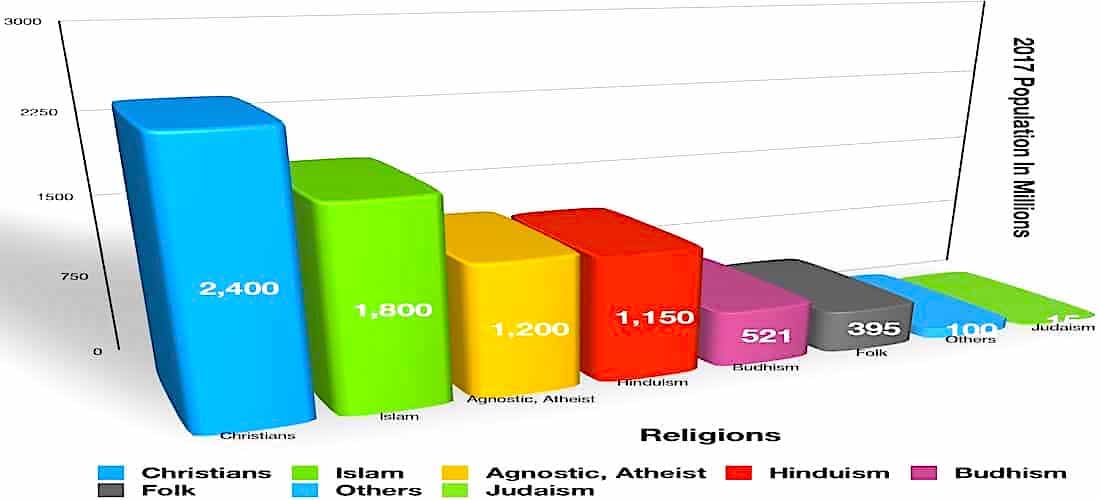
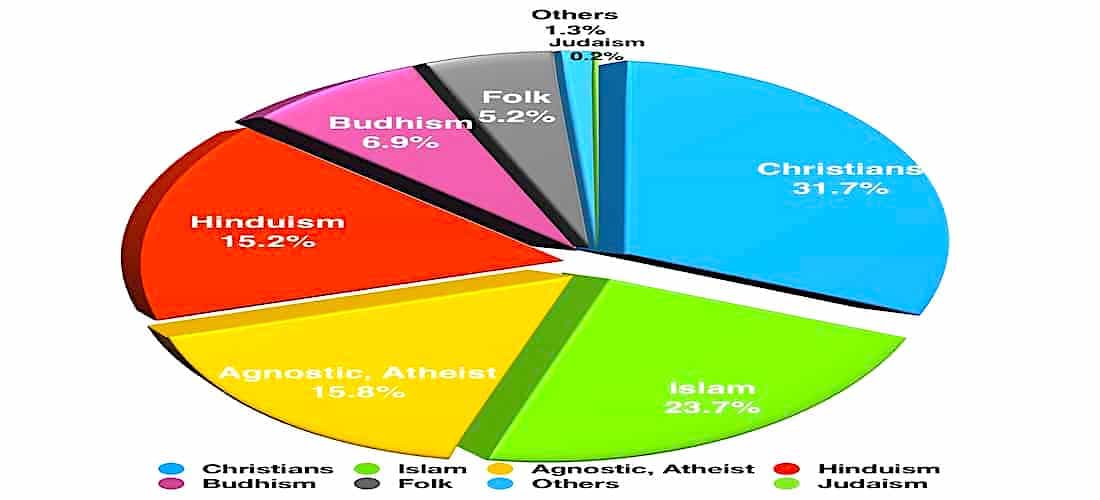
CHRISTIANITY BY CONTINENT
Size And Distribution Of World’s Christian Population
Previously South America was on the top of this list but now Africa has almost same number of Christians living there and statistics show that in near future Africa will be on the top of this list.
PLEASE DRAG THE HANDLE IN THE MIDDLE OF THE PICTURE TO SEE TWO CHARTS
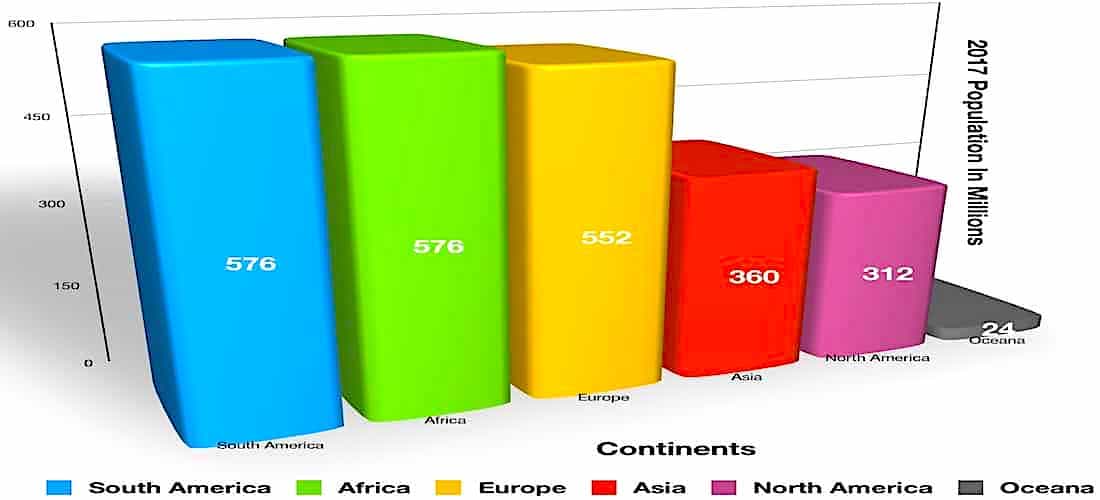
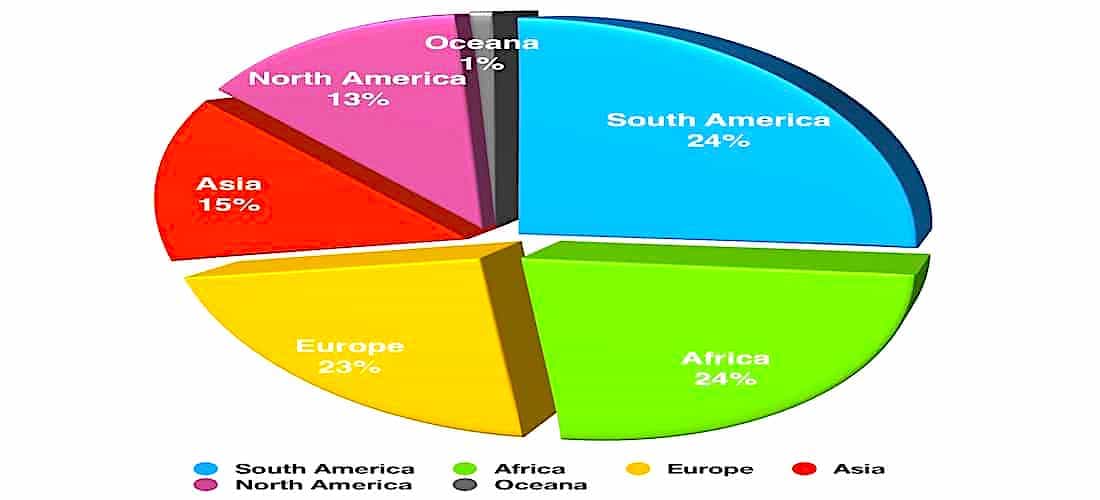
Share this article
Written by : TheLastDialogue
A Synthesis of Religions. O Mankind I am presenting you the case of God,, يا أيّها الجنس البشري؛أنا أقدم لكم "قضية الله, ¡Oh humanidad! Les estoy presentando el caso de Dios, O люди, я представляю вам дело Божие, ای بشر من سخنان خدا را به تو عرضه می کنم., Ey insanlık, ben sana Tanrı'nın davasını sunuyorum, 哦人类,我向你展示上帝的情形, اے بنی نوع انسان میں آپ کے سامنے خدا کا مقدمہ رکھتا ہوں
"The Last Dialogue" is an individual's effort by the Will of his Lord to make this world a better living place, to raise the human intellect for the fulfillment of God’s Will and to invoke God’s Mercy on humans.
The Last Dialogue (thelastdialogue.org) stands as a testament to human understanding, held in high esteem and frequently cited across prominent platforms such as Wikipedia, Reddit, and Quora. Its profound significance is evidenced by the multitude of citations and mentions it garners from scholars spanning various faith traditions, including Judaism, Christianity, and Islam.
It distinguishes itself as the sole religious platform adhering to the noble tradition of not soliciting charity, zakat, or donations – a practice aligned with the true Sunnah of Prophets.
قُلْ مَا أَسْأَلُكُمْ عَلَيْهِ مِنْ أَجْرٍ وَمَا أَنَا مِنَ الْمُتَكَلِّفِينَ
Say, "I do not ask you for this any payment, and I am not of the pretentious.



